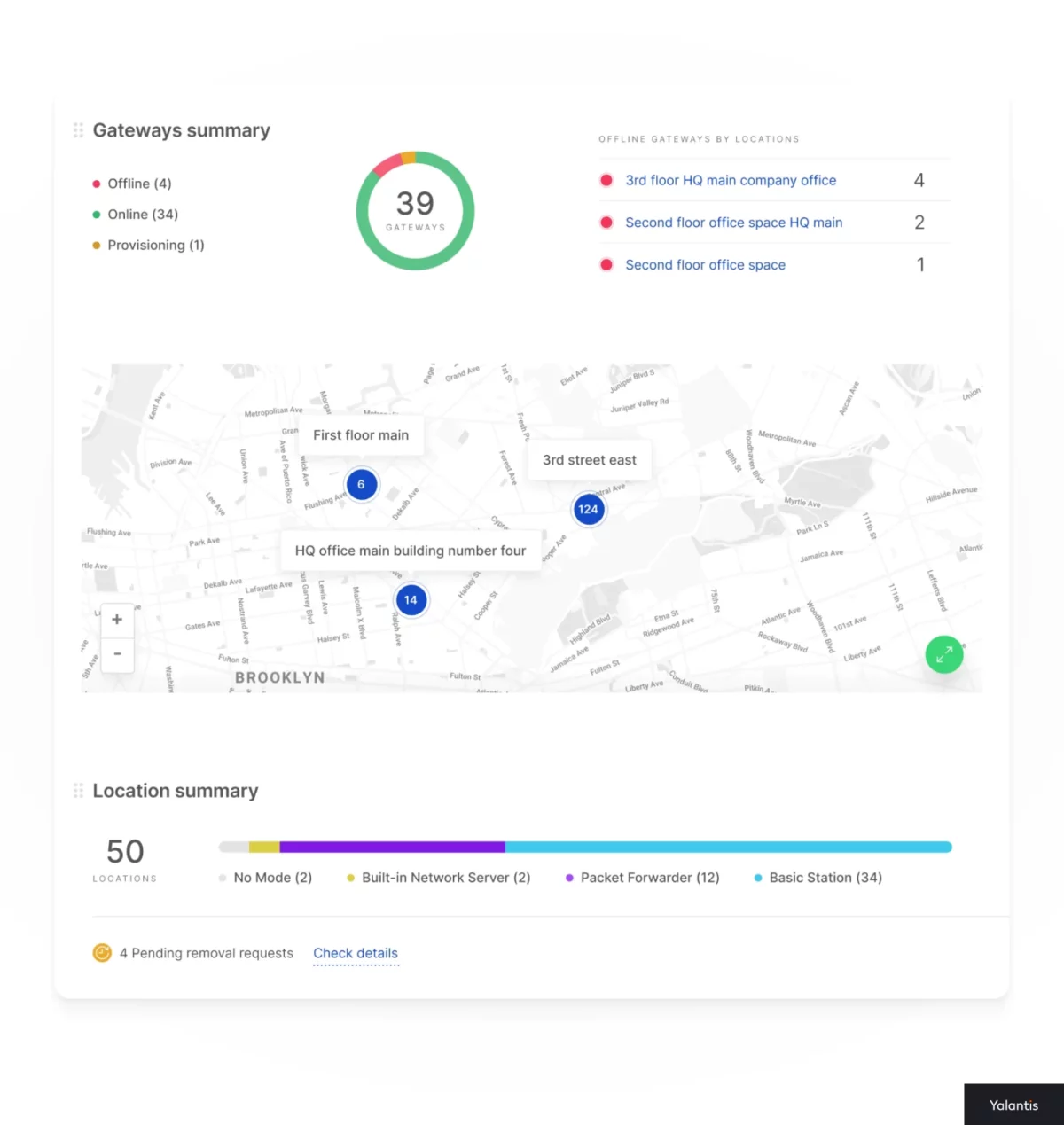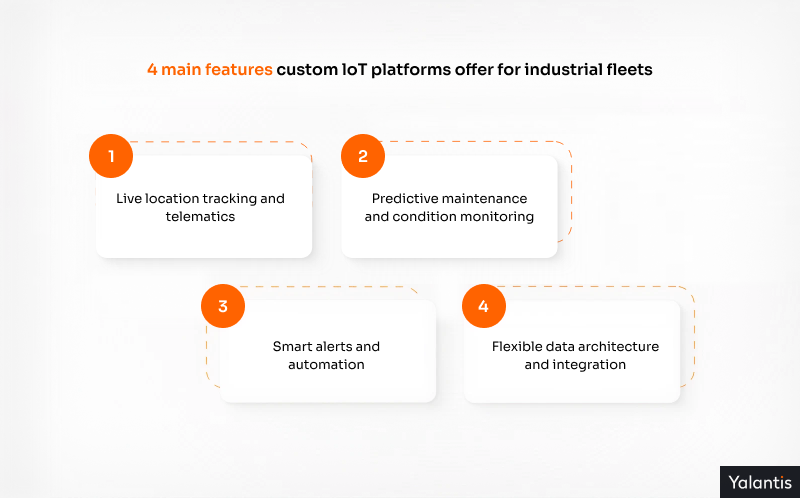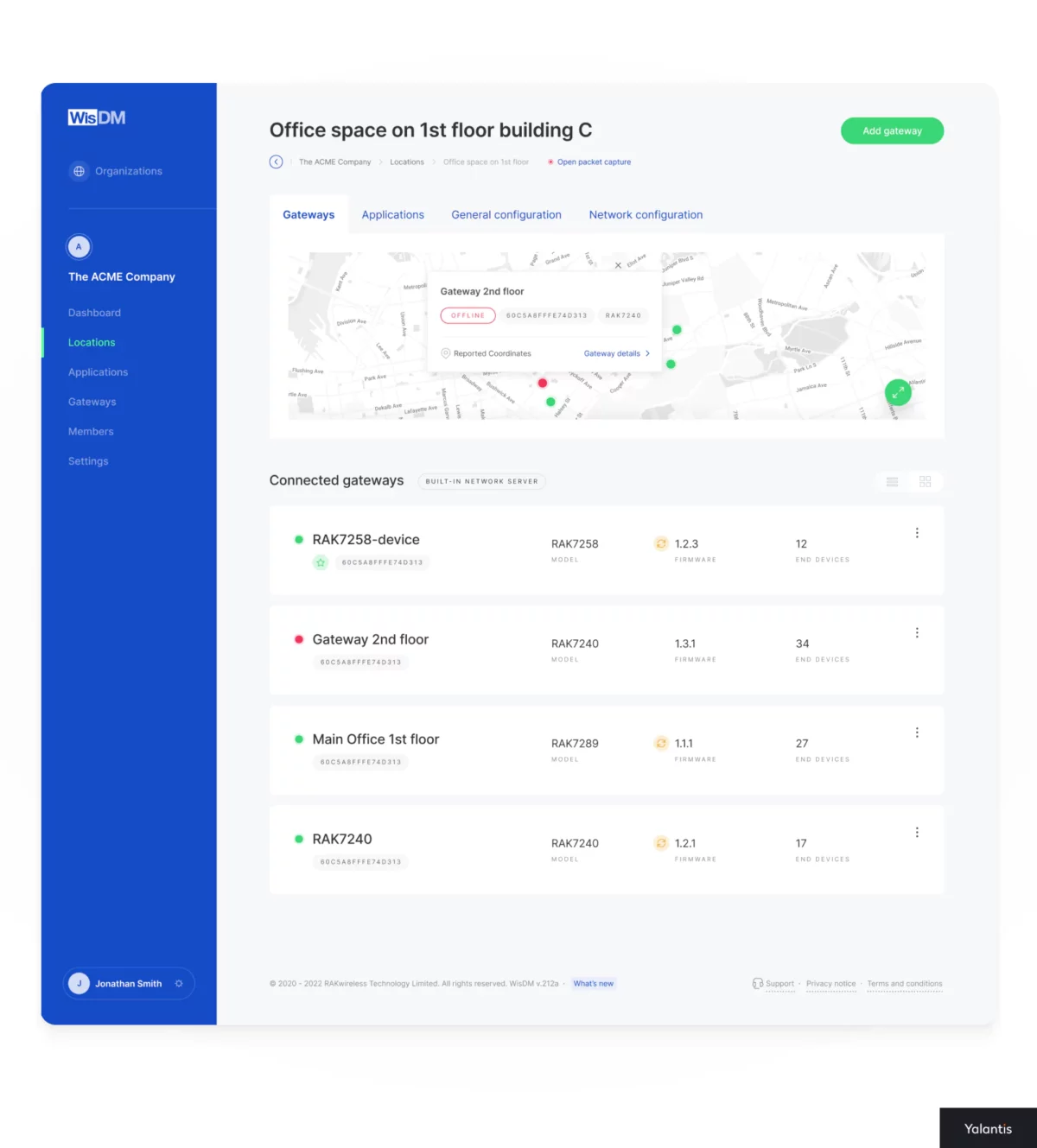
Managing industrial fleets in real time: What a custom IoT platform can do for you
Summarize:
Industrial fleet management today has changed tremendously. Dozens, maybe hundreds, of assets are constantly on the move. Each one is loaded with sensors transmitting data that one should analyze and act on instantly. In this environment, coordination, visibility, and speed are vital.
And yet, many companies still use off-the-shelf fleet management tools that promise everything but, in reality, deliver generic features and rigid integrations. These one-size-fits-alls can’t suit your individual fleet — they were designed for the average fleet.
But then, there are custom IoT fleet management solutions. They’re flexible, scalable, and built around your specific needs. If there’s one thing we’ve learned from developing a solution like this for RAKwireless, it’s this:
“When you’re managing thousands of IoT-connected assets, you don’t just need a platform — you need a whole control center.”
That’s exactly what we delivered: a cloud-based platform to manage IoT networks and industrial fleets of any complexity. And in the process, we witnessed the difference a custom solution can make. In this post, we’ll explore what such a platform can offer fleet managers — and why off-the-shelf often falls short.

Highlights:
- Managing industrial fleets with IoT networks means real-time visibility, predictive analytics, remote control, and automation.
- Custom platforms integrate with your hardware, workflows, and systems — no one-size-fits-all fleet management.
- RAKwireless scaled from manual setup to full remote fleet management with our custom-built solution.
Want to see how IoT fleet management software works in practice?
Check out our case studyWhat custom IoT fleet management systems can do for your business

When discussing a custom IoT platform, we mean a modular, scalable system designed around your hardware, data flow, and business logic. And nowadays, such fleet management solutions are gaining prominence.
According to Grand View Research, the global IoT fleet management market, valued at $8 billion in 2024, will surpass $20 billion by 2030. That kind of growth can’t be accidental. Instead, it’s a response to real, pressing needs in logistics, manufacturing, energy, and other industries.
Let’s explore what a custom IoT fleet management system looks like.
Live location tracking and telematics
Real-time location visibility is at the core of any fleet management system. A custom IoT platform integrates GPS modules, cellular and satellite telematics, accelerometers, engine sensors, and more. It gives you a full picture of each vehicle’s status and whereabouts.
But not everyone needs the same view. Here’s how the asset tracking dashboard works for different roles:
- Dispatchers. The dashboard offers a live map with vehicle locations and routes, real-time traffic insights, and alerts for delays, deviations, or idle time.
- Fleet operators. The solution features route assignments, vehicle or system status, driver behavior monitoring, sensor health indicators, and route optimization insights.
- Managers. The platform provides vehicle performance analytics, KPIs, historical route data, and predictive maintenance alerts.
For example, when building WisDM, an IoT fleet management system for RAKwireless, we allowed users to manage gateways worldwide and monitor thousands of IoT devices from a single screen.
Predictive maintenance and condition monitoring
Scheduled-only fleet maintenance is a thing of the past. With custom IoT and predictive maintenance, you monitor vehicle health, fuel consumption, temperature trends, vibration anomalies, or tire pressure deviations in real time.
Hence, you’re not just reacting when something breaks down. Instead, you predict maintenance, reduce downtime, extend equipment lifespan, and lower vehicle maintenance and operational costs.
Smart alerts and automation
Managing industrial fleet vehicles involves multiple moving parts, literally and figuratively. A custom real-time fleet tracking platform offers workflow automation, so you’re not catching vehicle performance issues or handling routine tasks manually.
Need an alert when a gateway goes silent for more than 10 minutes? Or an automatic task triggered when sensor data exceeds a threshold? That’s entirely possible with custom IoT solutions. As a result, you get optimized fleet operations, faster response times, and fewer human errors.
Flexible data architecture and seamless integration
The biggest advantage of going custom? You get an API-first architecture that connects well with various third-party services, from ERP systems and CRM platforms to data analytics dashboards.
We understand that your fleet data shouldn’t be isolated. It needs to connect to your existing systems. That’s why, in our WisDM project, we built a serverless, scalable web platform to integrate with third-party tools easily. And we nailed it. Our client put it as follows:
“I like how Yalantis helps us save time. We delivered them a high-level set of user requirements, and together with their team of business analysts, we detailed the requirements and created a full scope for the project. And, based on that, we could start planning and building.”
This is what a custom IoT platform should look like — based on your fleet operations, most critical challenges, and core goals.
Real-world example: How we helped RAKwireless scale its operations

Our client, RAKwireless, had a great thing going. Their IoT toolset worked well for small and midsize businesses. With its help, users could manually configure each gateway through a local interface. That setup was efficient for a network with a few gateways.
But when RAKwireless set its sights on the enterprise market, the requirements shifted. They needed a scalable, cloud-based solution. One that could support remote management of hundreds of IoT gateways, many installed in hard-to-reach locations.
Challenges
When working on WisDM, an IoT-based industrial fleet management platform for RAKwireless, we had to ensure the following:
- Real-time data sync across thousands of IoT devices
- Seamless integration with various IoT sensors and systems
- An intuitive dashboard for different types of users
Yalantis solution
We built an end-to-end, scalable, serverless web architecture tailored to the IoT network complexities. Here’s what we delivered:
- Support for long-running operations like bulk sensor configuration
- A mix of asynchronous and synchronous processes
- A cloud-based dashboard with data-driven insights
- Self-service tools, from onboarding and access control to vehicle tracking and fleet management
- Improved customer service tools
Results
RAKwireless now has a scalable, enterprise-grade platform that delivers real-time fleet management and visibility, all without losing the simplicity its customers love.
Experiencing issues with real-time visibility into your fleets?
Let’s discuss your custom IoT platformWhy off-the-shelf fleet management solutions often fall short
Off-the-shelf fleet management tools can be tempting. They’re fast to deploy, offer stylish dashboards, and promise to “fit all.” However, when your operations grow more complex or your industry has unique needs, such tools tend to miss the mark.
On the flip side, managing industrial fleets with IoT that’s custom-made solves the following limitations:
Lack of customization. You have to adapt your workflows to the off-the-shelf tool, instead of the other way around.
Inflexible integrations. Prebuilt platforms often struggle to connect with specialized hardware, legacy systems, or custom dashboards.
Industry mismatch. A tool built solely for logistics might not work well for energy, construction, or agriculture sectors, where assets, data, and compliance needs are different.
Moreover, many off-the-shelf tools lock you into fixed features and tight vendor dependencies. Want to add a new sensor type or integrate a new data pipeline? That will likely be costly or even impossible.
In contrast, custom transportation software follows your business logic, tech stack, and industry requirements. It’s future-ready, scalable, and focused on delivering long-term ROI. Companies seeking tailored fleet management capabilities can benefit from IoT logistics solutions development, which enables seamless integration of sensors, real-time tracking, and advanced analytics to optimize industrial fleet operations.
Conclusion
Real-time industrial fleet service is fundamental to making your process smooth. Whether you’re tracking moving assets or managing remote equipment, visibility and control at the moment make all the difference.
While off-the-shelf tools might get you started, they can’t handle the scale, complexity, or industry nuance many modern fleets demand. The actual value is in thinking long-term, with IoT solutions for fleet management that are made for your business.
If you’re ready to stop compromising and build a fleet solution that truly fits, count on Yalantis.
Want to know how Yalantis can help?
Explore our expertise in IoT developmentFAQ
How long does it take to build and deploy fleet management software?
To build and deploy a custom platform for managing industrial fleets with IoT devices, you’ll need 6 to 12 months, depending on complexity. When working with our company, you’ll get an MVP to launch quickly. Then, we’ll scale based on your needs.
How much does it cost to develop a custom fleet IoT platform?
The cost of a custom fleet IoT platform largely depends on required features, integrations, and hardware specifics. To manage industrial fleets with IoT, you’ll need from $25K for a basic solution. Need a more precise quote? Contact our team at Yalantis.
What if I don’t have detailed technical requirements for a fleet management platform yet?
No problem! Many clients approach us with just an idea. Our job is to assist you with shaping the full scope. We’ll determine how to manage industrial fleets with IoT platform based on your workflows, industry needs, operational efficiency goals, and growth plans.
Can you help modernize or expand an existing fleet system?
Sure thing! We can either modernize or expand your current industrial fleet service. How exactly? We integrate new tools, upgrade existing ones, or rebuild some components entirely.
How do you handle data security and regulatory compliance?
We focus on addressing IoT security risks. For example, when working on the RAKwireless project, we protected the fleet management system with role-based management and access controls. We also implement end-to-end encryption and build solutions with your industry regulations in mind.
Rate this article
4.8/5.0
based on 17 reviews
